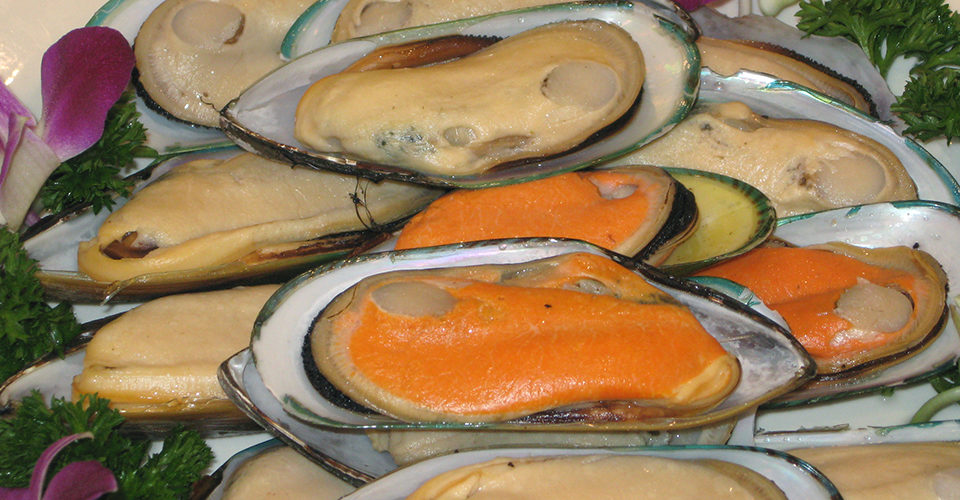Seafoods, especially invertebrates such as mollusks and crustaceans, are high in taurine

Scientific and technological developments in the field of food have led to a marked shift in how consumers deal with food and health. There is growing awareness among consumers that the dietary source and form of food can affect their overall health. In this context, the many positive nutritional aspects of seafood make it unique.
These aspects include its low saturated fatty acid content, high n-3 fatty acid content, high-quality protein and balanced amino acid profile containing all the essential amino acids. Seafood also contains vitamins D, A and B12; the minerals iodine and selenium, and other bioactive substances; as well as peptides and amino acids.
One of the amino acids that possess effects beyond the provision of basic nutrients is taurine.
Beneficial effects
The beneficial effects of dietary taurine have been observed in both animal and human, as evidenced in studies by the author and recently reported by Yukio Yamori and fellow researchers in Advances in Experimental Medicine and Biology.
Their data indicated reduced cardiovascular risk through taurine alone or in combination with omega-3 polyunsaturated fatty acids.
Study results point to the use of taurine as a nutritional supplement to protect against oxidative stress, neurodegenerative diseases and atherosclerosis. Taurine is also regarded as essential for retinal development in children.
Taurine may reduce the production of proinflammatory products and has been shown to lower blood pressure in borderline hypertensive patients. It has also been reported that taurine can improve cardiac performance, reduce blood cholesterol values and suppress platelet aggregation.
Taurine in seafood
According to a 2006 article by Thomas Bouckenooghe and coauthors in Current Opinion in Clinical Nutrition and Metabolic Care, the capacity for biosynthesis of taurine varies among species. Compared to test rats, for example, humans, primates, cats and even fish exhibit very little biosynthesis of taurine. As a result, dietary taurine accounts for the majority of the taurine supply.
Taurine is an end product of sulphur amino acid (SAA) metabolism. Animal protein is generally considered a better source of SAA than vegetable protein. Fish consumption reportedly raises concentrations of serum taurine higher than beef and chicken muscle.
Seafoods, especially invertebrates such as mollusks and crustaceans, are high in taurine. Saithe, cod and salmon also provide excellent taurine concentrations. Variations in taurine concentration among species and between individuals of the same species may be due to seasonal changes in temperature, salinity and diet. Fresh products offer the highest levels of taurine, as levels of the amino acid decrease considerably in highly processed products.
Taurine content in farmed fish
Dietary taurine requirements and the effects of taurine concentration in feeds on the final quality of farmed fish have been studied for several species. When synthetic taurine or organic material high in taurine was added to diets, taurine levels comparable to those present in the diets of wild fish were achieved in the fillets of the farmed fish.
In a current experiment with African catfish, the fish received fishmeal-based diets enriched with 1-18 mg synthetic taurine/g wet feed over six weeks. The taurine content in the edible part of the fish rose with increasing dietary taurine concentration and leveled off when the taurine inclusion exceeded 8 mg/gram wet feed. A twofold increase of taurine in the muscle was achieved with the 18 mg/gram feed diet.
(Editor’s Note: This article was originally published in the May/June 2009 print edition of the Global Aquaculture Advocate.)
Now that you've finished reading the article ...
… we hope you’ll consider supporting our mission to document the evolution of the global aquaculture industry and share our vast network of contributors’ expansive knowledge every week.
By becoming a Global Seafood Alliance member, you’re ensuring that all of the pre-competitive work we do through member benefits, resources and events can continue. Individual membership costs just $50 a year. GSA individual and corporate members receive complimentary access to a series of GOAL virtual events beginning in April. Join now.
Not a GSA member? Join us.
Author
-
Edel O. Elvevoll, Ph.D.
Professor of Food Science
Norwegian College of Fishery Science
Institute of Marine Biotechnology
University of Tromsø
Tagged With
Related Posts

Intelligence
Byproduct utilization for increased profitability, part 5
Fish protein hydrolysates have been used in the food industry for the development of antioxidants, emulsifiers, flavoring agents, anti-bacterial agents and feed. As natural products, they have a growing acceptance, since natural products are preferred by some consumers over industrial products.

Intelligence
Doctors: Place a greater value on seafood consumption
Many important organizations around the world fail to acknowledge the importance of seafood to human health and well-being. There is a disconnect between what we know regarding the benefits of seafood and what is being done to acknowledge these benefits and increase seafood consumption in nutrition.

Health & Welfare
Amino acid supplementation reduces protein levels in pangasius diets
Trials show that supplementation with amino acids could reduce protein levels from a typical 28 percent to 23 percent in pangasius diets.

Aquafeeds
Breaking the 20 percent soy barrier in fish feed
Reduced performance in fish fed high-soy feeds has been blamed on antinutrients, low methionine content and palatability issues. Pretreatment to inactivate anti-nutritional compounds and supplementation with amino acids improves soy-based feed performance, but not to control levels.


